Enterprise Resource Planning (ERP) is a comprehensive business management system that integrates various functions and processes within an organization. It serves as a centralized platform that allows businesses to manage and automate their core activities, ensuring efficient and seamless operations. Partnering with an IT service provider can enhance the implementation and maintenance of ERP systems, ensuring optimal performance and support.
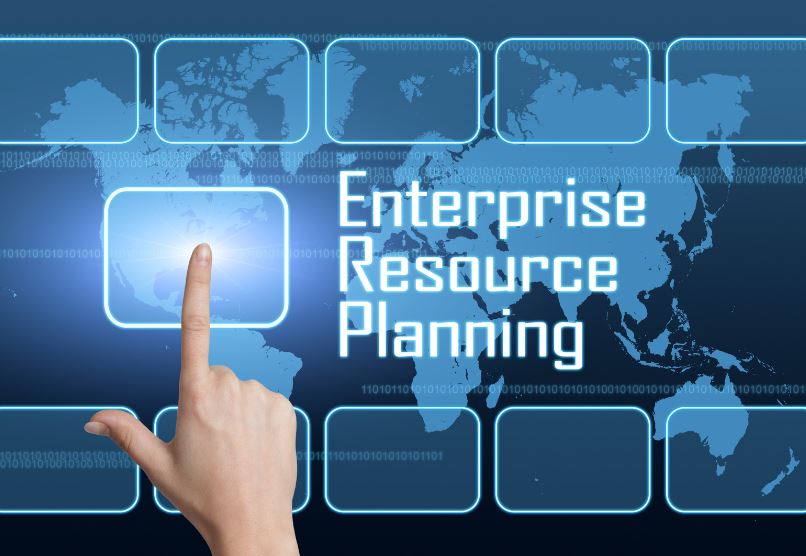
Definition and Purpose of ERP
At its core, ERP is a software solution that facilitates the integration and management of different departments and functions within an organization. It provides a unified view of business operations, enabling companies to streamline processes, improve productivity, and make well-informed decisions.
The purpose of ERP is to enhance collaboration and communication across various departments, enabling the flow of information in real-time. By consolidating data from different areas such as finance, human resources, supply chain management, and customer relationship management, ERP systems enable businesses to have a holistic view of their operations.
Benefits of Implementing ERP in Business Operations
Implementing an ERP system in business operations offers a range of benefits that contribute to improved efficiency and effectiveness. Here are some key advantages of ERP implementation:
- Process Optimization: ERP systems automate and streamline business processes, reducing manual tasks and eliminating redundancy. This improves overall efficiency and productivity, allowing employees to focus on value-added activities.
- Data Integration: ERP integrates data from various departments, providing real-time visibility into the organization's performance. This enables better decision-making based on accurate and up-to-date information.
- Improved Collaboration: ERP promotes collaboration by facilitating the sharing of information and resources across departments. It breaks down silos and enables cross-functional teams to work together seamlessly.
- Enhanced Customer Experience: With ERP, businesses can effectively manage customer information and interactions, leading to improved customer satisfaction and loyalty. Customer relationship management (CRM) modules within ERP systems help businesses track sales, manage customer inquiries, and provide personalized service.
- Inventory and Supply Chain Management: ERP systems enable businesses to optimize inventory levels, reduce stockouts, and streamline supply chain processes. By maintaining accurate inventory data and automating procurement and order fulfillment, businesses can minimize costs and improve customer satisfaction.
- Regulatory Compliance: ERP systems often include features and functionalities to help businesses meet industry-specific regulations and compliance requirements. This reduces the risk of non-compliance and potential penalties.
Implementing an ERP system enables businesses to unlock potential for greater efficiency, improved decision-making, and increased competitiveness. Carefully assessing the specific needs and requirements of the organization during the ERP selection and implementation process is crucial to ensure a successful and tailored solution.
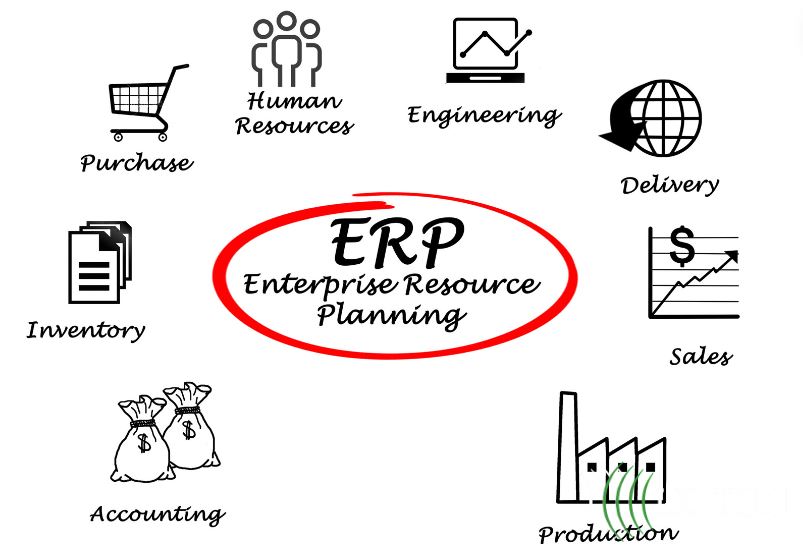
Key Modules of ERP Systems
Enterprise Resource Planning (ERP) systems are comprehensive software solutions that integrate various business functions and processes into a single unified system. ERP modules cover different areas of business operations, each serving a specific purpose. Let's explore some of the key modules commonly found in ERP systems.
Finance and Accounting
The finance and accounting module of an ERP system is designed to streamline financial processes and ensure accurate financial management. It includes features such as general ledger, accounts payable, accounts receivable, budgeting, and financial reporting. This module provides businesses with real-time visibility into their financial data, enabling efficient financial planning, analysis, and decision-making.
Human Resources
The human resources (HR) module of an ERP system centralizes all HR-related activities and data. It covers areas such as employee management, payroll processing, benefits administration, training and development, and performance evaluation. This module helps businesses automate HR processes, improve employee engagement, and ensure compliance with labor regulations. By integrating HR data with other modules, such as finance and supply chain management, ERP systems enable better workforce planning and resource allocation.
Supply Chain Management
The supply chain management (SCM) module of an ERP system focuses on optimizing the flow of goods and services from suppliers to customers. It includes functionalities such as inventory management, procurement, order management, demand forecasting, and logistics coordination. By integrating SCM with other modules, businesses can achieve better visibility and control over their supply chain, reduce costs, improve efficiency, and enhance customer satisfaction.
Customer Relationship Management
The customer relationship management (CRM) module of an ERP system helps businesses manage their interactions with customers and prospects. It encompasses activities such as lead management, sales forecasting, marketing campaign management, customer service, and support. The CRM module enables businesses to track customer interactions, analyze customer data, and improve customer satisfaction and retention. Integration with other ERP modules, such as finance and supply chain management, enables a seamless flow of information across the organization.
These key modules of an ERP system work together to provide businesses with a comprehensive solution for managing their core operations. By integrating and automating various functions, ERP systems enhance efficiency, accuracy, and collaboration across departments. The availability of real-time data enables businesses to make informed decisions and respond quickly to changing market conditions.
Implementation of ERP
Once a business decides to adopt an Enterprise Resource Planning (ERP) system, the implementation process begins. This section will explore the key steps involved in successfully implementing an ERP system, including planning and assessment, customization and integration, as well as training and deployment.
Planning and Assessment
The first step in implementing an ERP system is to carefully plan and assess the needs of the business. This involves identifying the specific goals, requirements, and challenges that the ERP system should address. The planning phase includes:
- Needs Assessment: Conduct a thorough evaluation of the existing systems, processes, and workflows to identify areas that can be improved through ERP implementation. This assessment helps in determining which modules of the ERP system will best suit the organization's needs.
- Goal Setting: Clearly define the goals and objectives of the ERP implementation. These goals may include streamlining business processes, improving data accuracy, enhancing reporting capabilities, or achieving better integration across departments.
- Budgeting: Evaluate the financial resources required for implementing the ERP system. Consider both the upfront costs, such as software licenses and hardware upgrades, as well as ongoing maintenance and support expenses. Explore strategies for cost reduction, such as utilizing open-source ERP solutions or considering cloud-based options.
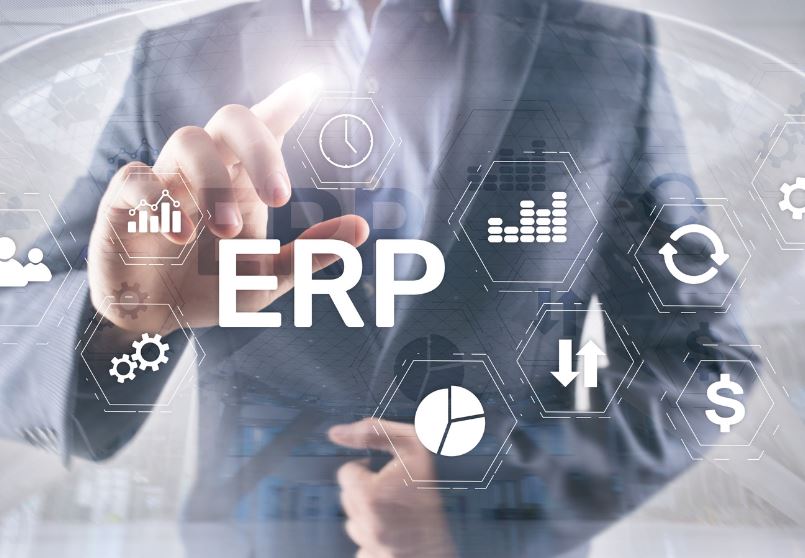
Customization and Integration
Once the planning phase is complete, customization and integration of the ERP system are crucial to align it with the unique needs of the business. This phase involves:
- Customization: Tailor the ERP system to fit the specific requirements of the organization. This may involve configuring settings, creating custom fields, or modifying workflows to align with existing business processes. It is important to strike a balance between customization and maintaining the standard functionalities of the ERP system.
- Integration: Integrate the ERP system with existing software applications and databases to ensure seamless data flow across different departments. This integration may involve connecting the ERP system with finance and accounting software, HR systems, or customer relationship management (CRM) tools. The goal is to eliminate data silos and enable real-time access to accurate, consolidated information.
Training and Deployment
The final stage of ERP implementation involves training employees and deploying the system throughout the organization. This phase includes:
- Training: Provide comprehensive training programs to educate employees on how to effectively use the ERP system. This training should cover various aspects, such as navigating the system, entering data, generating reports, and utilizing specific modules relevant to their roles. Training sessions can be conducted through workshops, online courses, or a combination of both.
- Deployment: Roll out the ERP system in a phased approach or through a full-scale implementation, depending on the organization's size and complexity. During deployment, closely monitor the system's performance, data accuracy, and user feedback. Address any issues or challenges that arise promptly to ensure a smooth transition.
Following a well-structured implementation process allows businesses to maximize the benefits of ERP systems and streamline their operations effectively. It's important to remember that ERP implementation is an ongoing journey, requiring continuous monitoring, evaluation, and fine-tuning to ensure the system remains aligned with evolving business needs.
Challenges and Considerations
Implementing an Enterprise Resource Planning (ERP) system in your business can bring numerous benefits, but it's important to consider and address the potential challenges that may arise. Here are some key challenges and considerations to keep in mind when implementing an ERP system:
Cost Considerations
One of the primary challenges of implementing an ERP system is the associated costs. ERP systems can require significant financial investment, including licensing fees, hardware and infrastructure upgrades, customization, training, and ongoing maintenance expenses. It's essential to carefully evaluate the costs involved and develop a comprehensive budget that accounts for both the initial implementation and long-term support and maintenance. Exploring IT cost reduction strategies can help optimize costs without compromising the effectiveness of the ERP system.
Data Security and Privacy
With the implementation of an ERP system, businesses need to prioritize data security and privacy. ERP systems centralize and store vast amounts of sensitive business data, including financial information, customer data, and employee records. Protecting this data from unauthorized access, cyber threats, and potential breaches is crucial. It's important to implement robust security measures, such as strong passwords, email filtering, and multi-factor authentication. Regularly updating and patching the ERP system and adhering to industry best practices are also essential to maintain data security and privacy.
Organizational Change Management
Implementing an ERP system often requires significant changes to business processes and workflows. This can be met with resistance from employees who may be accustomed to existing systems and processes. Effective organizational change management is vital to ensure a smooth transition and acceptance of the new system. It involves clear communication about the benefits of the ERP system, providing comprehensive training to employees, and addressing concerns or challenges that may arise during the implementation process. It's important to involve key stakeholders and department heads from the beginning to ensure their support and engagement in the change management process.
Considering and addressing these challenges and considerations allows businesses to better navigate the implementation of an ERP system. Developing a comprehensive plan that includes cost assessment, data security measures, and change management strategies is crucial. Additionally, businesses should continuously monitor and evaluate the effectiveness of the ERP system to make necessary adjustments and ensure its successful integration into the organization.

Success Factors in ERP Implementation
Implementing an Enterprise Resource Planning (ERP) system is a significant undertaking for any organization. To ensure a successful ERP implementation, several key factors must be considered and addressed. In this section, we will explore three critical success factors: executive sponsorship, clear communication, and continuous monitoring and evaluation.
Executive Sponsorship
Executive sponsorship plays a crucial role in the success of an ERP implementation. When top-level executives actively support and champion the project, it demonstrates a commitment to change and encourages buy-in from employees throughout the organization.
The executive sponsor provides the necessary leadership, vision, and resources to drive the implementation process forward. They help to align the ERP project with the organization's strategic goals and ensure that it receives the attention and resources it deserves. The executive sponsor also helps resolve any conflicts or barriers that may arise during the implementation journey.
To maximize the benefits of executive sponsorship, it is important to select a sponsor who has a deep understanding of the organization's operations and can effectively communicate the benefits of ERP to all stakeholders. By doing so, the organization can establish a strong foundation for a successful ERP implementation.
Clear Communication
Clear and effective communication is vital throughout the ERP implementation process. It is essential to keep all stakeholders informed and engaged, from employees to management, throughout each phase of the project.
Communication should be tailored to the needs of different stakeholders, ensuring that they understand the purpose, benefits, and progress of the ERP implementation. Regular updates, meetings, and training sessions should be conducted to ensure that everyone is on the same page.
Additionally, communication should address any concerns or questions that arise during the implementation process. This helps to alleviate any anxieties and promotes transparency, fostering a positive environment for change.
Maintaining clear and open lines of communication within organizations fosters collaboration, enables effective problem-solving, and ensures alignment towards common goals.
Continuous Monitoring and Evaluation
Continuous monitoring and evaluation are critical to the long-term success of an ERP implementation. It involves assessing the effectiveness of the system, identifying areas for improvement, and making necessary adjustments to optimize its performance.
Regular monitoring allows organizations to identify any operational issues, system bottlenecks, or user concerns promptly. By doing so, they can take corrective action in a timely manner, preventing further complications and ensuring a smooth operation.
Evaluation should include feedback from end-users, managers, and other stakeholders to gain a comprehensive understanding of the system's performance. This feedback can be used to identify training needs, refine processes, and implement necessary changes to enhance the system's functionality.
Continuously monitoring and evaluating the ERP system enables organizations to ensure it aligns with their evolving business needs and remains a valuable tool for streamlining operations.
The success of an ERP implementation relies on several factors, including executive sponsorship, clear communication, and continuous monitoring and evaluation. By addressing these critical elements, organizations can enhance the likelihood of a successful ERP implementation and maximize the benefits it brings to their business operations.
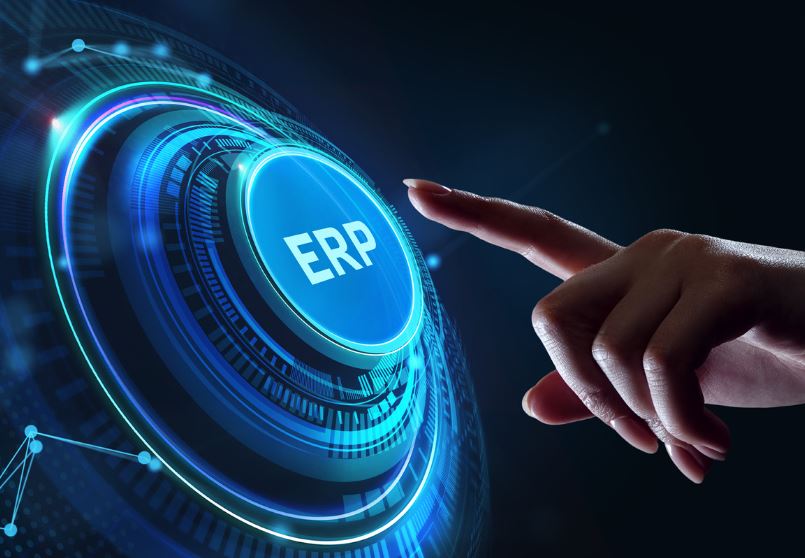
Future Trends in ERP
As technology continues to evolve, so does the field of Enterprise Resource Planning (ERP). To stay competitive in the dynamic business landscape, organizations need to adapt to emerging trends and leverage innovative solutions. In this section, we will explore some of the future trends in ERP, including cloud-based ERP solutions, artificial intelligence and machine learning integration, as well as IoT and big data analytics in ERP.
Cloud-Based ERP Solutions
Cloud-based ERP solutions have gained significant popularity in recent years. These systems offer a range of benefits, including flexibility, scalability, and cost-effectiveness. With cloud-based ERP, businesses can access their data and applications securely from anywhere, at any time, using internet-connected devices.
The cloud-based approach eliminates the need for on-premises infrastructure, reducing hardware and maintenance costs. It also provides the agility to quickly scale resources based on business needs, allowing organizations to efficiently adapt to growth or changes in demand. Additionally, cloud-based ERP offers enhanced collaboration capabilities, enabling remote teams to work together seamlessly.
Artificial Intelligence and Machine Learning Integration
The integration of artificial intelligence (AI) and machine learning (ML) technologies in ERP systems is another significant trend shaping the future of business operations. AI and ML algorithms can analyze vast amounts of data, identify patterns, and make data-driven predictions and recommendations.
Incorporating AI and ML into ERP systems allows organizations to automate repetitive tasks, enhance decision-making processes, and optimize business operations. For instance, AI-powered chatbots can assist employees and customers in resolving queries efficiently, while ML algorithms can analyze historical data to forecast demand and optimize inventory management effectively.
IoT and Big Data Analytics in ERP
The Internet of Things (IoT) and big data analytics are transforming the way businesses operate, and their integration with ERP systems holds great potential. IoT devices, such as sensors and smart devices, can collect real-time data from various sources, enabling organizations to monitor and control processes more effectively.
Leveraging big data analytics enables organizations to gain valuable insights from the vast amounts of data generated by IoT devices. These insights can help optimize supply chain management, enhance customer experiences, and improve decision-making across various departments.
To illustrate the potential impact of IoT and big data analytics in ERP, consider the example of a manufacturing company. By tracking real-time data from IoT sensors embedded in production equipment, the ERP system can identify patterns of machine failure and trigger proactive maintenance, minimizing downtime and optimizing production efficiency.
As businesses embrace these future trends in ERP, it's crucial to prioritize data security and privacy. Protecting sensitive information and ensuring compliance with regulations should remain a top priority.
Cloud-based ERP solutions, AI and ML integration, and leveraging IoT and big data analytics allow organizations to streamline operations, make informed decisions, and gain a competitive edge in the ever-evolving business landscape.
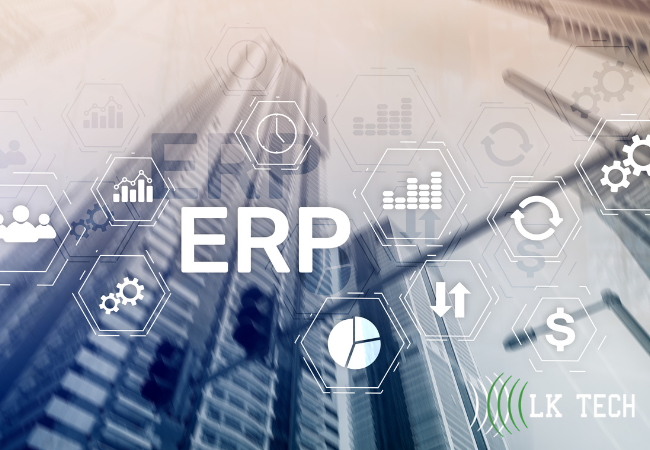
Transform Your Business with LK Tech's Expert IT Solutions!
Discover innovative IT solutions with LK Tech, your trusted partner for IT solutions in Cincinnati. Whether you're looking to enhance security, streamline operations, or leverage advanced technologies like cloud services and disaster recovery, our tailored approach ensures optimal performance and cost-efficiency.
Contact us today to explore how we can empower your business with reliable, scalable IT services.


